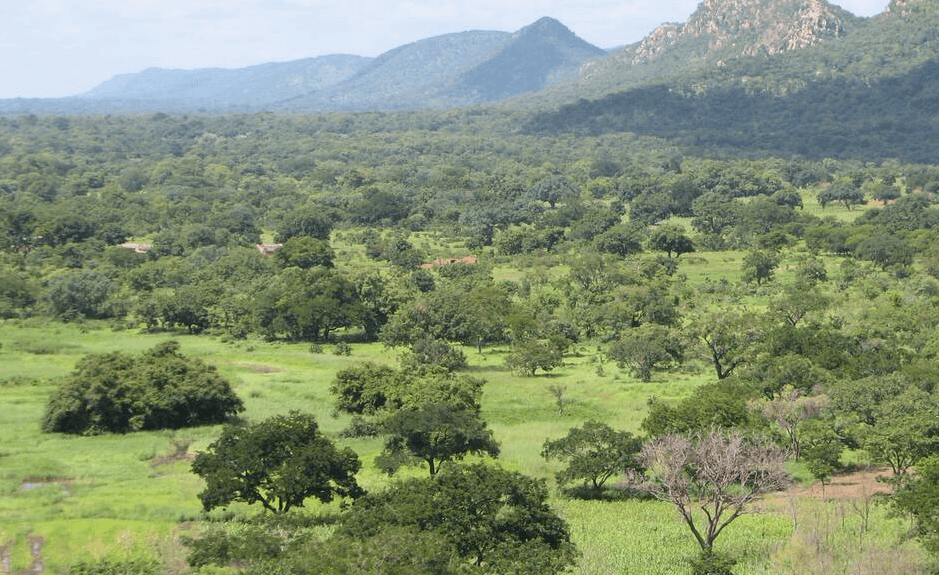Nestled in the heart of West Africa, Burkina Faso National Forest stands as a testament to the rich biodiversity and natural beauty of the region. As one of the country's most valuable ecological assets, this national forest plays a crucial role in preserving the delicate balance of ecosystems while providing numerous benefits to both the environment and local communities. In this article, we will delve into the wonders of Burkina Faso National Forest, exploring its remarkable characteristics, the challenges it faces, and the sustainable initiatives undertaken to protect its splendor.
Location and Characteristics of Burkina Faso National Forest
Burkina Faso National Forest is situated in the central part of Burkina Faso, bordered by neighboring countries such as Mali, Niger, Benin, and Togo. Covering a vast expanse of [insert size] square kilometers, the forest captivates visitors with its diverse landscapes, ranging from dense woodlands to open savannahs. The forest's boundaries are carefully demarcated to ensure the preservation of its unique ecosystems.
Biodiversity and Conservation
The national forest boasts an impressive array of flora and fauna, showcasing the rich biodiversity of Burkina Faso. From towering mahogany trees to vibrant orchids, the forest is a treasure trove of botanical wonders. It serves as a sanctuary for numerous endangered and endemic species, including the majestic West African lion and the elusive nimba otter shrew. Conservation efforts have been paramount in protecting these invaluable species, with dedicated protected areas within the forest serving as their safe havens.
Ecosystem Services
Beyond its ecological significance, Burkina Faso National Forest provides a multitude of vital ecosystem services. The forest acts as a carbon sink, mitigating the impacts of climate change by absorbing substantial amounts of carbon dioxide. Additionally, it serves as a natural water catchment area, ensuring a steady supply of freshwater for surrounding communities. The forest's rich soil also supports agricultural activities, contributing to the country's food security.
Threats and Challenges for Burkina Faso National Forest
Despite its importance, Burkina Faso National Forest faces several threats that endanger its delicate ecosystems. Deforestation and land degradation, primarily driven by unsustainable agricultural practices and the demand for timber, pose significant challenges. Furthermore, climate change exacerbates these issues, leading to increased desertification and droughts. Illegal activities, such as logging and poaching, further jeopardize the forest's integrity and biodiversity.
Sustainable Management and Initiatives
Recognizing the urgency of protecting this natural gem, the government of Burkina Faso has implemented various policies and regulations to promote sustainable forest management. These initiatives focus on striking a balance between economic development and environmental preservation. Engaging local communities in decision-making processes and providing them with alternative income opportunities have been integral to these efforts. Through sustainable practices like agroforestry and reforestation, the government aims to restore and preserve the forest's vitality for future generations.
Tourism and Recreation in Burkina Faso National Forest
Burkina Faso National Forest holds immense potential as a destination for eco-tourism. Nature enthusiasts can immerse themselves in the breathtaking beauty of the forest, exploring its diverse ecosystems and observing rare wildlife. Adventure seekers can indulge in activities like hiking, bird-watching, and guided safaris, making unforgettable memories in this enchanting setting. Local communities, too, benefit from tourism, as it provides economic opportunities and encourages the preservation of their cultural heritage.
Conclusion
In conclusion, Burkina Faso National Forest stands as a testament to the importance of preserving and protecting natural habitats. With its remarkable biodiversity, provision of essential ecosystem services, and potential for sustainable tourism, the forest holds immense value for both the country and the world. It is our collective responsibility to safeguard this ecological treasure, supporting initiatives that promote sustainable management and conservation. Let us come together to ensure the longevity of Burkina Faso National Forest, a symbol of Africa's natural heritage.
FAQs
Question 1: How can I visit Burkina Faso National Forest?
To visit Burkina Faso National Forest, it is advisable to join a guided tour or contact local tour operators who specialize in eco-tourism. They can provide you with the necessary permits, transportation, and knowledgeable guides to explore the forest safely and responsibly.
Question 2: Are there any endemic species found in the forest?
Yes, Burkina Faso National Forest is home to several endemic species. These species are unique to the region and play a vital role in maintaining the forest's biodiversity. Conservation efforts are in place to protect these rare and remarkable creatures.
Question 3: What are the major threats to the national forest?
The major threats to Burkina Faso National Forest include deforestation, land degradation, climate change impacts, and illegal activities such as logging and poaching. These factors pose significant challenges to the integrity and sustainability of the forest.
Question 4: How does the government support sustainable management?
The government of Burkina Faso supports sustainable forest management through the implementation of policies and regulations that promote conservation and community engagement. They provide incentives for sustainable practices, support reforestation efforts, and involve local communities in decision-making processes.
Question 5: Can I participate in conservation activities?
Yes, there are opportunities to participate in conservation activities within Burkina Faso National Forest. Local organizations and initiatives often welcome volunteers who are passionate about preserving the forest's biodiversity. You can contribute by assisting with reforestation efforts, conducting wildlife surveys, or raising awareness about the importance of conservation.
References:
- "Burkina Faso." Encyclopædia Britannica. Accessed May 24, 2023. https://www.britannica.com/place/Burkina-Faso
- "Burkina Faso National Forest." Global Forest Watch. Accessed May 24, 2023. https://www.globalforestwatch.org/map
- "Burkina Faso - Biodiversity." African Wildlife Foundation. Accessed May 24, 2023. https://www.awf.org/countries/burkina-faso
